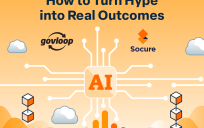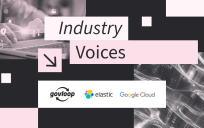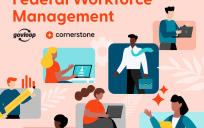As government agencies continue to accelerate their adoption of artificial intelligence (AI) technologies, they face the critical challenge of preparing the workforce to operate effectively in an AI-driven environment. As just one indicator of the scope of this challenge, a 2024 Deloitte report revealed six in ten IT workers in the public sector considered a shortage of AI-related skills to be a key barrier to success. This finding underscores a pressing need to develop strategic approaches for workforce transformation. As we will examine, the key to success lies in striking the right combination of upskilling programs, new hiring models, and university partnerships.
Three Key Priorities
Successfully navigating the workforce transformation toward AI requires more than simply recruiting AI specialists. Agencies must balance external hiring with robust internal development strategies and broader efforts to cultivate the workforce pipeline for AI readiness. Below are three actionable strategies agencies can embrace to position themselves as AI-forward organizations while managing cost and change effectively.
Investing in Upskilling and Cultural Transformation
Upskilling is not just about learning new tools; it is about changing mindsets. Many government employees have developed deep expertise in their fields, but may be hesitant to embrace unfamiliar technologies that could help them do their jobs more efficiently. Leadership must drive the adoption of AI tools by modeling their use and encouraging experimentation and pilot projects. Furthermore, agencies should implement structured AI training programs. Such modular and accessible learning programs can equip workers with the skills and confidence not just to use AI, but to become informed collaborators in shaping AI strategy and corporate culture.
Adopting Competency-Based Hiring Models
By pivoting toward competency-based hiring models, agencies can prioritize practical AI skills on par with specific academic credentials, thereby widening the talent pool and accelerating workforce readiness. Recruiters must recognize that job-specific AI competencies such as machine learning fundamentals, virtual assistant usage or AI-powered content creation can be developed through various educational pathways, including certifications and bootcamps. Roles should be assessed individually to determine the AI skills most relevant to the job. In marketing and communications, for instance, generative AI skills might be crucial; while in administrative or leadership positions, they may play a supporting role.
Developing Strategic Partnerships with Academic Institutions
To future-proof their workforce, agencies must cultivate the next generation of AI talent; and one of the most effective ways to do this is through university partnerships. Such partnerships can help higher education institutions provide the AI-focused curricula, internships, research opportunities, and other professional development resources needed to prepare students for AI-related roles. These alliances are particularly valuable at the community college level, where demand for AI training is high but resources are often limited.
Supporting the Workforce with Strong Data Governance
Despite much of the AI readiness conversation focusing on workforce skills, agencies must also lay the technical and policy groundwork that enables responsible innovation. In particular, organizations should implement a coherent and comprehensive set of policies and standards that dictate how data is collected, stored, accessed, and secured. Data governance should be implemented with precision to ensure compliance and data integrity. However, governance policies must remain flexible enough to allow timely access to critical data, even when that data is owned by other departments.
To bridge the gap between policy design and workforce readiness, agencies should invest in cross-functional collaboration between technical teams, legal advisors, and operational leaders. This ensures that data governance frameworks are not only technically sound but also aligned with ethical standards, regulatory requirements, and mission-specific goals. Fostering this alignment early will help agencies mitigate risks, streamline compliance efforts, and create a foundation where responsible AI development can flourish without compromising accountability or transparency.
While most employees do not need deep expertise in data governance, they must operate within the frameworks established by IT leaders and data scientists. And agencies must ensure their AI developers are trained in principles of data hygiene, accuracy, privacy, and lifecycle management. A unified approach to governance can bridge the gap between newly hired AI specialists and long-time agency personnel, ensuring consistent data standards and ethical AI deployment across the board.
Conclusion
As artificial intelligence becomes increasingly embedded in government operations, the ability of agencies to adapt hinges on how effectively they prepare their workforce for this shift. Success will depend not just on adopting new technologies, but on cultivating a talent strategy that blends targeted upskilling, competency-based hiring practices, and strong academic partnerships. By taking a deliberate, forward-thinking approach to workforce transformation, federal and local agencies can ensure they are not only keeping pace with AI advancements, but leading the way.
Burnie Legette is Director IOT Sales – Artificial Intelligence at Intel





Leave a Reply
You must be logged in to post a comment.